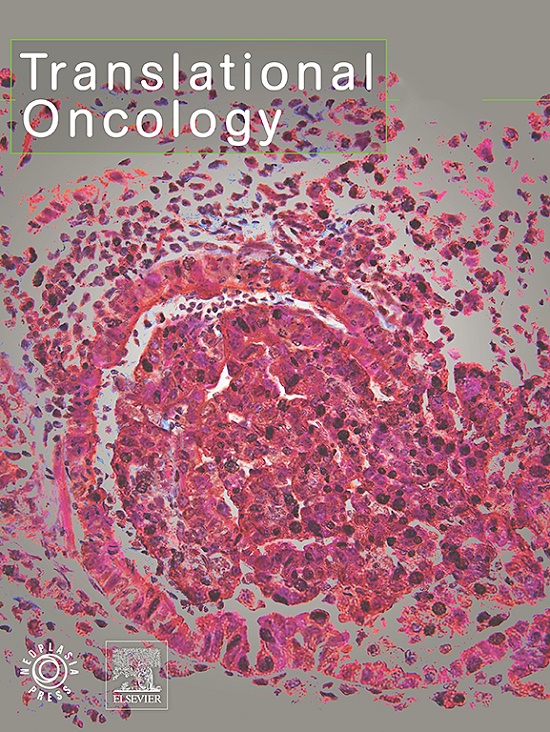Differential gene expression profiles of pancreatic ductal adenocarcinomas among African American and caucasian American patients
IF 5
2区 医学
Q2 Medicine
引用次数: 0
Abstract
Purpose
In the United States, African Americans (AA) have higher Pancreatic ductal adenocarcinoma (PDAC) incidence and mortality rates than Caucasian Americans (CA). This study aimed to identify distinct gene expression signatures and differentially regulated pathways in AA and CA PDACs.
Methods
Transcriptomic analyses were conducted on FFPE sections of PDACs (n = 40) from AA (9 PDACs/3 normal) and CA (31 PDACs/5 normal) tissues to evaluate the differential expression and signaling pathways within and between racial groups and to identify distinctive and common genes/pathways.
Results
We identified unique differentially expressed genes in both racial groups. Distinct set genes were modulated in AA and CA PDACs, compared to their respective normal tissues. Thirteen genes (seven upregulated and six downregulated) were differentially modulated in AA PDACs vs. CA PDACs. CIBERSORT analysis revealed distinct immune cell composition, with increased resting NK cells and activated mast cells, in AA PDACs, and higher CD4 memory T cells present in CA PDACs. Canonical subtype analyses indicated a more heterogenous subtype distribution in AA PDACs, whereas CA PDACs showed a predominance of classical subtypes. Using a publicly available database, we analyzed the top 25 upregulated genes (normal vs. tumor) for AA and CA racial groups and seven differentially upregulated genes in AA PDACs vs. CA PDACs comparison for associations with survival outcomes. Eight genes (CHST15, PARP15, NUDT16, SERPINB3, PADI1, H3C8, ZNF488, and LETM2) correlated with poor patient survival.
Conclusion
These findings show distinct gene expression profiles and modulated pathways in AA and CA PDACs, supporting development of race-based therapeutic targets.
非裔美国人和白种人患者胰腺导管腺癌的差异基因表达谱
目的在美国,非裔美国人(AA)的胰腺导管腺癌(PDAC)发病率和死亡率高于白种人(CA)。本研究旨在确定AA型和CA型pdac中不同的基因表达特征和差异调控途径。方法对来自AA(9个/3个正常)和CA(31个/5个正常)组织的PDACs (n = 40)的FFPE切片进行转录组学分析,以评估种族内部和种族之间的差异表达和信号通路,并找出独特和共同的基因/通路。结果我们在两个种族群体中发现了独特的差异表达基因。与各自的正常组织相比,AA和CA pdac中不同的组基因被调节。13个基因(7个上调,6个下调)在AA型pdac和CA型pdac中有差异调节。CIBERSORT分析揭示了不同的免疫细胞组成,AA型pdac中静息NK细胞和活化肥大细胞增加,CA型pdac中CD4记忆T细胞增加。典型亚型分析表明,AA型pdac的亚型分布更为异质性,而CA型pdac则以典型亚型为主。利用一个公开可用的数据库,我们分析了AA和CA种族群体中前25个上调基因(正常与肿瘤),以及AA pdac与CA pdac比较中7个差异上调基因与生存结果的关系。8个基因(CHST15、PARP15、NUDT16、SERPINB3、PADI1、H3C8、ZNF488、LETM2)与患者生存差相关。结论AA型和CA型pdac具有不同的基因表达谱和调控途径,支持基于种族的治疗靶点的开发。
本文章由计算机程序翻译,如有差异,请以英文原文为准。
求助全文
约1分钟内获得全文
求助全文
来源期刊

Translational Oncology
ONCOLOGY-
CiteScore
8.40
自引率
2.00%
发文量
314
审稿时长
54 days
期刊介绍:
Translational Oncology publishes the results of novel research investigations which bridge the laboratory and clinical settings including risk assessment, cellular and molecular characterization, prevention, detection, diagnosis and treatment of human cancers with the overall goal of improving the clinical care of oncology patients. Translational Oncology will publish laboratory studies of novel therapeutic interventions as well as clinical trials which evaluate new treatment paradigms for cancer. Peer reviewed manuscript types include Original Reports, Reviews and Editorials.
 求助内容:
求助内容: 应助结果提醒方式:
应助结果提醒方式:


